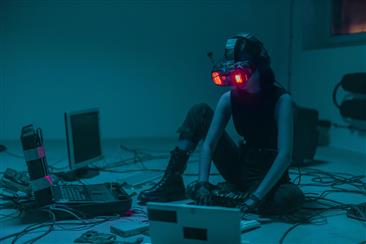
Quantum computing has long carried the weight of expectation—an advanced form of computation that could one day outperform classical computers in solving some of the world’s most complex problems. From simulating molecules to optimizing logistical networks, the promises attached to quantum systems are sweeping. But as we move through the third decade of the 21st century, the question remains: how close are we, really, to using quantum computers in the everyday world?
What Makes Quantum Different?
Unlike classical computers, which process information in binary (bits represented as 0s or 1s), quantum computers use qubits, which can exist in multiple states simultaneously thanks to a property known as superposition. Combine this with entanglement—a phenomenon where qubits become interdependent even when separated—and the result is a machine capable of exploring far more computational paths than a classical system in certain scenarios.
This is not about running Excel faster. It’s about transforming fields like cryptography, drug design, weather modeling, and materials science by tackling problems too large for current supercomputers to handle within a reasonable timeframe.

Where Are We Now?
As of 2025, quantum computing remains in a transitional phase. We’ve moved past theoretical groundwork and lab experiments, entering an era where prototype machines are being built and tested by tech giants, startups, and research institutions alike.
Companies like IBM, Google, and IonQ have developed machines with dozens—and in some cases, hundreds—of qubits. However, these machines are still noisy, meaning they are error-prone and susceptible to environmental interference. This class of devices is known as Noisy Intermediate-Scale Quantum (NISQ) computers. They are useful for experimentation but not yet practical for solving major problems at scale.
Still, NISQ-era quantum computers are providing a critical training ground. Developers and researchers are using these systems to write code, refine algorithms, and test real-world simulations on simplified versions of larger problems. Think of it as quantum’s equivalent of the early 1950s in classical computing—room-sized machines with limited use, but immense potential.
Practical Applications: On the Horizon, Not in the Living Room
There are several domains where quantum computing might make its mark sooner than others:
- Chemistry and Materials: Quantum computers are particularly well-suited to simulate quantum systems like molecules. Pharma companies are exploring how quantum systems might help in modeling proteins and chemical reactions, potentially shortening the timeline for drug development.
- Finance: Complex risk modeling, asset pricing, and fraud detection are areas where quantum’s brute computational force could yield advantages. Several banks have started collaborating with quantum hardware companies to explore algorithmic improvements.
- Logistics and Supply Chains: Quantum algorithms are being tested to handle route optimization and resource allocation—problems that grow exponentially harder with scale and variables.
- Cryptography: Perhaps the most publicized implication is quantum’s potential to break widely-used encryption methods. While this has raised security concerns, it’s also sparked efforts to develop quantum-resistant algorithms—an entirely new field in cybersecurity.
That said, most of these applications are in their infancy. They’re happening in sandboxes, not in production.
The Hardware Bottleneck
One of the key challenges is scalability. To perform meaningful tasks, a quantum computer likely needs thousands—if not millions—of fault-tolerant qubits. Current machines fall short, not only in number but in quality. Each additional qubit introduces more complexity and risk of error.
Researchers are pursuing various architectures to overcome this, including:
- Superconducting circuits (used by Google and IBM),
- Trapped ions (used by IonQ and Honeywell),
- Photonic systems (used by Xanadu),
- Topological qubits, a theoretical model being pursued by Microsoft that could, if proven, offer more error resistance.
But none of these approaches has emerged as a clear winner. Each has trade-offs between coherence time, scalability, and engineering feasibility.
Software and Algorithms: Waiting for the Hardware
Even if quantum hardware were ready, we’d still need better software. Writing algorithms for quantum computers is a highly specialized task, requiring a deep understanding of quantum mechanics as well as computer science. Tools like Qiskit (IBM), Cirq (Google), and others are making quantum programming more accessible, but the ecosystem remains immature.
Additionally, many quantum algorithms only offer a theoretical speedup. That is, they’re proven to be faster on paper, but they require idealized conditions or large numbers of qubits to outperform classical equivalents. This means quantum supremacy—the point where a quantum computer performs a task no classical computer can—is still limited to very specific, non-useful tasks, like generating random numbers.

Who’s Building the Future?
While a few dominant players are grabbing headlines, a broader ecosystem is forming. Governments in the U.S., Europe, and China have poured billions into quantum research. Private investors, recognizing the long-term upside, have backed startups developing both hardware and quantum-ready algorithms.
Partnerships are emerging across sectors. Universities are integrating quantum into computer science and physics curricula. Cloud platforms like AWS and Azure now offer access to quantum hardware via remote simulators, allowing experimentation without needing a quantum lab.
The net result is a growing community that’s preparing for a quantum future, even if that future isn’t arriving in full anytime soon.
What Needs to Happen Next?
- Error Correction: Creating quantum error correction methods that don’t require exponentially more qubits is essential. Without reliable error correction, real-world computation is impractical.
- Standardization: Like classical computing’s early days, quantum computing lacks standardized benchmarks, protocols, and development tools. This makes collaboration and comparison harder.
- Workforce Development: There is a major talent gap. Quantum computing requires expertise in physics, engineering, computer science, and mathematics—often in combination.
- Commercial Justification: For companies to invest seriously, they need clear, provable use cases. Right now, quantum R&D is often seen as speculative or a hedge against future obsolescence.
So—How Close Are We?
The honest answer: closer than ever, but not quite there.
Quantum computing is no longer science fiction, but it’s not yet a reliable tool either. Most experts agree that mainstream applications are likely a decade away, possibly more. The work happening today is foundational—laying the tracks for trains that will run tomorrow. That includes refining hardware, building better algorithms, and defining use cases that make sense not just in theory but in business.
Until then, quantum computing will remain a field of intense research, cautious optimism, and big bets.
What’s clear, however, is that it’s not going away. Whether as a complement to classical systems or, eventually, as a replacement in niche areas, quantum computing has moved beyond the hype phase. The questions now are technical, practical, and economic—not speculative.
And that, in itself, is progress.






